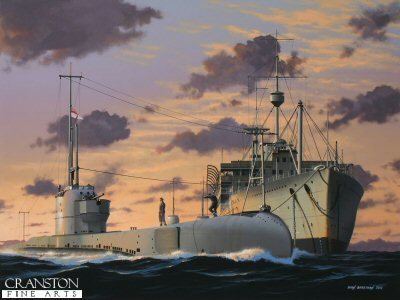Name HMS Poseidon Commissioned 5 May 1930 Construction started 5 September 1928 Length 79 m | Laid down 5 September 1928 Fate Sunk on 9 June 1931 Launched 22 August 1929 Draft 4.17 m | |
 | ||
Class and type Parthian-class submarine Displacement 1,475 long tons (1,499 t) surfaced2,040 long tons (2,070 t) submerged Builder Vickers Shipbuilding and Engineering | ||
HMS Poseidon (P99) was a Parthian-class submarine designed and built by Vickers Shipbuilding and Engineering in Barrow-in-Furness for the Royal Navy, launched on 22 August 1929.

She spent most of her short career assigned to the Yellow Sea region, based at the Royal Navy's base at Weihai, China.
At about 12:12 on 9 June 1931, while exercising on the surface with the submarine tender Marazion 20 mi (32 km) north of the vessels' base at Weihai, and despite excellent visibility, Poseidon collided with the Chinese merchant vessel SS Yuta.
Thirty-one of the submarine's crew managed to scramble into the water before the submarine sank to the seabed 130 ft (40 m) below within a few minutes. Aircraft carrier HMS Hermes, heavy cruiser HMS Berwick and sister submarine HMS Perseus led the rescue operations. Poseidon was equipped with Davis Submerged Escape Apparatus which had come into service two years earlier. This was a closed circuit underwater breathing system which provided the wearer with a supply of pure oxygen and a canvas drogue to slow the rate of ascent. Despite the submarine not being equipped with specialised escape compartments or flooding valves, eight of the crew managed to leave the forward end of the boat, although two failed to reach the surface and one died later. Twenty-one crew died in total.

A consequence of the successful escape of part of the crew was to change Admiralty policy from advising crews to wait for the arrival of assistance to attempting to escape from the submarine as soon as possible. This policy was announced in the House of Commons in March 1934.
Salvage
The secret salvaging of the submarine in 1972 by China's then newly formed underwater recovery units was described in 2002 in an article in the popular Chinese magazine Modern Ships (Chinese: 现代舰船; pinyin: Xiàndài jiàn chuán). This was not known about in the west until the researcher and journalist Steven Schwankert discovered that article with a Google web search and later read it in a Hong Kong library.
In the former British naval cemetery on the island of Liugong, gravestones, bearing clearly legible names, dates and epitaphs of the lost sailors were found in haphazard stacks by historians looking into the sinking of HMS Poseidon and its salvage by the Chinese. The British Ministry of Defence has not received an answer to what became of the remains of the crew. Results of this research are told in Schwankert's book Poseidon: China's Secret Salvage of Britain's Lost Submarine and the documentary film The Poseidon Project.
